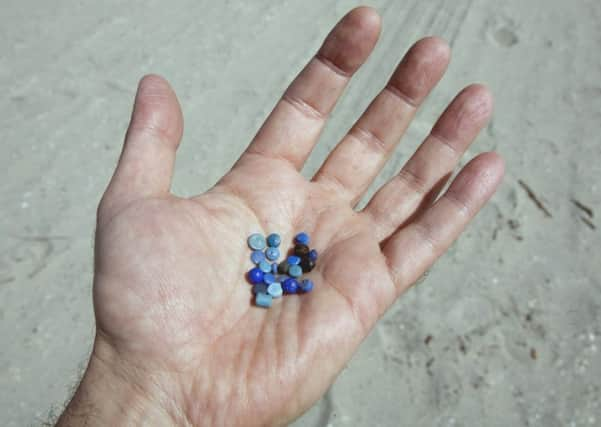Forth beach is UK hotspot for plastic '˜nurdle' pollution


But this wasn’t some industrialised city or foreign shores. This was on small beach on the Firth of Forth – Ferrycraigs at North Queensferry. Other places with particularly high nurdle deposits include Wardie Bay in Edinburgh and Gullane in East Lothian.
Ferrycraigs beach is about 12 miles from the Ineos Polymers plant at Grangemouth, where nurdles are produced.
Advertisement
Hide AdAdvertisement
Hide AdThe findings come from last week’s Technicolour Nurdle Hunt, organised by Scottish environmental charity Fidra, which saw teams of searchers scrutinising shorelines at 85 locations.
Nurdles are the raw materials for the plastics industry and are used to make a wide range of everyday products, from bin bags to bottle tops.
They are transported around Scotland by the lorryload and shipped in their billions to and from other countries.
But the multi-coloured granules are easily spilled during handling, and if not cleaned up can end up washing down drains, into rivers and eventually into the sea.
Advertisement
Hide AdAdvertisement
Hide AdOnce in the marine environment they can be mistaken for food by animals such as fish and seabirds, causing harm and potentially death.
The UK processes around three million tonnes of plastics every year, almost all in nurdle form.
Fidra estimates up to 53 billion of the man-made balls are lost each year around the UK.
The latest results highlight the prevalence of nurdles on UK beaches, with 93 per cent of hunts finding nurdles present and 43 per cent finding more than 100 items.
Advertisement
Hide AdAdvertisement
Hide AdThe Forth, a major hub for industry, is a known hotspot for nurdles – surveys over the years at Limekilns in Fife have found anywhere between 200,000 to more than two million.
Beach-cleaners removed 450,000 nurdles from the shore at Kinneil nature reserve in Bo’ness last autumn – but said they had barely scratched the surface of the problem after a full day of collecting.
Ineos has brought in a “zero pellet loss” strategy in an attempt to tackle the problem.
Alasdair Neilson, project officer at Fidra, expressed concern at the findings in the area and has called for tougher action to help combat the problem.
Advertisement
Hide AdAdvertisement
Hide Ad“It is shocking to see how prevalent nurdles are across the UK coastline,” he said. “It is clear the status quo cannot solve this issue. Responsibility and transparency is needed right across the supply chain.”
Douglas Chapman, MP for Dunfermline and West Fife, took part in the survey at North Queensferry.
“It was an incredible effort from the volunteers to collect 450,000 nurdles from the beach that day and it shows just how big this problem is to find so many at a single location,” he said.
Nurdles are part of a much bigger marine pollution problem, with estimates suggesting more than 12 million tonnes of plastic waste ends up in global oceans each year.